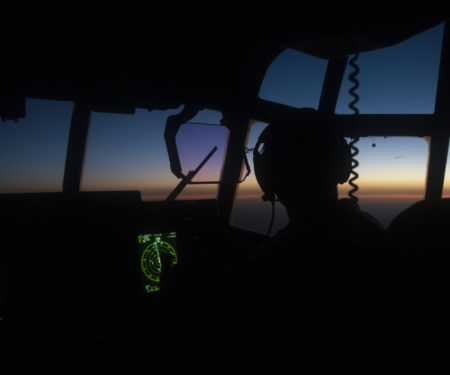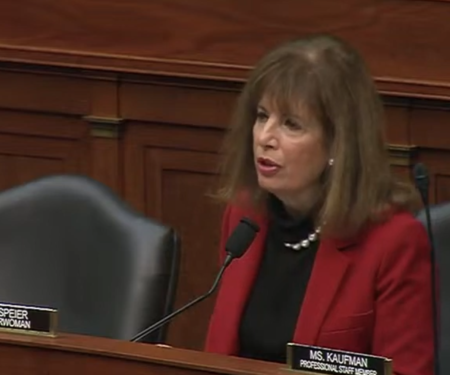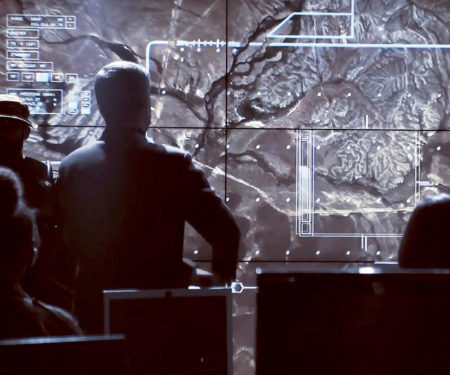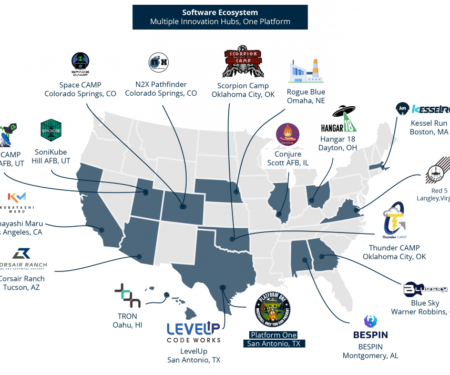Radar Sweep
House Approves Bill to Automatically Enroll Vets in VA Health Care
Eligible veterans would be automatically enrolled in the Department of Veterans Affairs health care system under a bill passed by the House on Jan. 20. Right now, veterans must proactively apply for VA health care benefits. The bill would require the department to instead automatically enroll veterans who meet existing eligibility criteria for VA health care. The VA would also have to provide a way for veterans to opt out of coverage.
National Reconnaissance Office Awards 5 Contracts for Commercial Satellite Radar Capabilities
The National Reconnaissance Office has issued contracts to five synthetic aperture radar satellite operators as the intelligence agency continues to look at how these commercial capabilities can be integrated into its missions. The five companies receiving contracts are Airbus U.S., Capella Space, ICEYE U.S., PredaSAR, and Umbra. The NRO declined to reveal the value of the contracts.
Human Error, Tech Glitches, and Tape Caused May 2020 F-22 Crash
Several mistakes—including maintenance, pilot, and technology errors, plus a wayward piece of tape—compounded to cause the secretive May 2020 plane crash in Florida that totaled an F-22 Raptor fighter, according to the results of an Air Force investigation.
Biden Predicts Putin Will Order Ukraine Invasion—but ‘Will Regret Having Done It’
President Biden said Jan. 19 that he had come to expect President Vladimir Putin of Russia to order an invasion of Ukraine, delivering a grim assessment that the diplomacy and threat of sanctions issued by the United States and its European allies were unlikely to stop the Russian leader from sending troops across the border.
OPINION: Canada Cautiously Steps Into the Indo-Pacific
The announcement of the AUKUS agreement between three of the Five Eyes members sent ripples through the Canadian national security ecosystem, with many asking why Canada was excluded from a major new Pacific security agreement and others arguing that Canada has not done enough to warrant joining such an agreement. In this op-ed, Stephanie Carvin, an expert on Canadian defense issues, notes that the message may have been received in Ottawa that it’s time to do more.
For SWAC Director, Balancing Government Secrecy, Industry Creativity, and Allied Equities
The leader of the Space Warfighting Analysis Center wants to be able to open up his team’s upcoming force design for an overarching “space data transport” network to a wide swath of U.S. commercial industry as well as to allied government and industry representatives. It won’t be easy, as it involves cutting the Gordian knot of secrecy tying up national security space.
Space and National Security: What to Expect in 2022
At the start of 2021, key questions loomed for the U.S. military space community: Would the Space Force survive under President Biden? Could the Defense Department really build a megaconstellation? And when would United Launch Alliance fly the long-awaited Vulcan Centaur, a vehicle that the Pentagon is counting on to deliver critical national security satellites to orbit. A year later, the Space Force stands on firmer political ground but is coming under pressure to deliver new technologies to counter threats from Russia and China. The Space Development Agency is counting down to the launch of its first operational satellites. And ULA is still waiting for Blue Origin to deliver engines for Vulcan’s maiden flight.
Air Force Must Harden Pacific Bases Against Missiles, Secretary Says
The Air Force needs to spend more to protect its Pacific bases from Chinese missiles, Secretary Frank Kendall said Jan. 19. “They [China] have noticed it's quite obvious that we depend upon a small number of assets, including forward air bases, to conduct operations,” Kendall said. “Because they're fixed, they're easily targetable. ... So we have got to respond to that.”
Pentagon Quietly Looking Into How Nonbinary Troops Could Serve Openly
The Defense Department has quietly begun looking into how it can allow troops whose gender identity is nonbinary to serve openly in the military, three advocates familiar with the situation told Military.com. The Pentagon has asked the Institute for Defense Analyses, or IDA, which operates federally funded research centers, to study the issue, said the advocates, one of whom requested anonymity to disclose a sensitive topic.
Air Force Maintainers Are Getting New ‘Janitor Gray’ Coveralls
A leaked Air Force PowerPoint slide gave Airmen a sneak peek of the coveralls that aircraft maintainers will be able to wear to and from base, on the flight line, and in other areas where they previously could not. The slide comes seven months after the Air Force officially announced the policy change for coveralls in June 2021. Before then, maintainers and other Airmen who worked in messy jobs such as fuels, firefighting, munitions, and engineering would often have to drive onto base in their camouflage utility uniform, change into their coveralls when they arrived, then change back into camouflage on their way out.
See How US Air Force Special Ops Squadrons Took On Dangerous Missions in Vietnam
The United States counted heavily on technology to overcome the large numbers of communist soldiers and guerrilla fighters in its defense of the Republic of Vietnam. This applied particularly to the U.S. Air Force, whose unofficial presence presaged the United States’ formal introduction of ground combat troops on March 8, 1965, and whose last combat missions were flown after the fall of Saigon on April 30, 1975. The years in between saw a wide variety of special operations conducted by highly skilled units of the Air Force.




